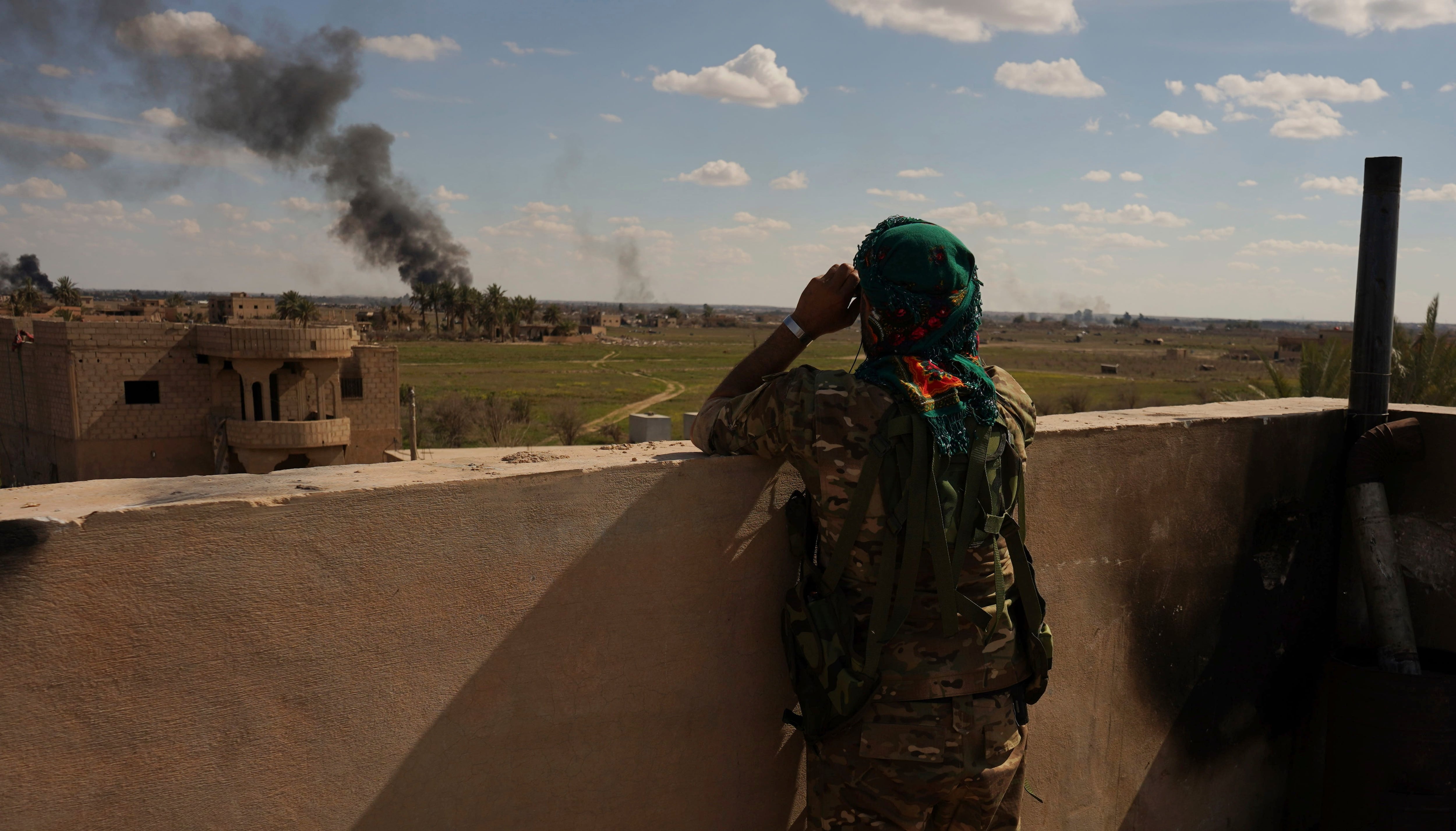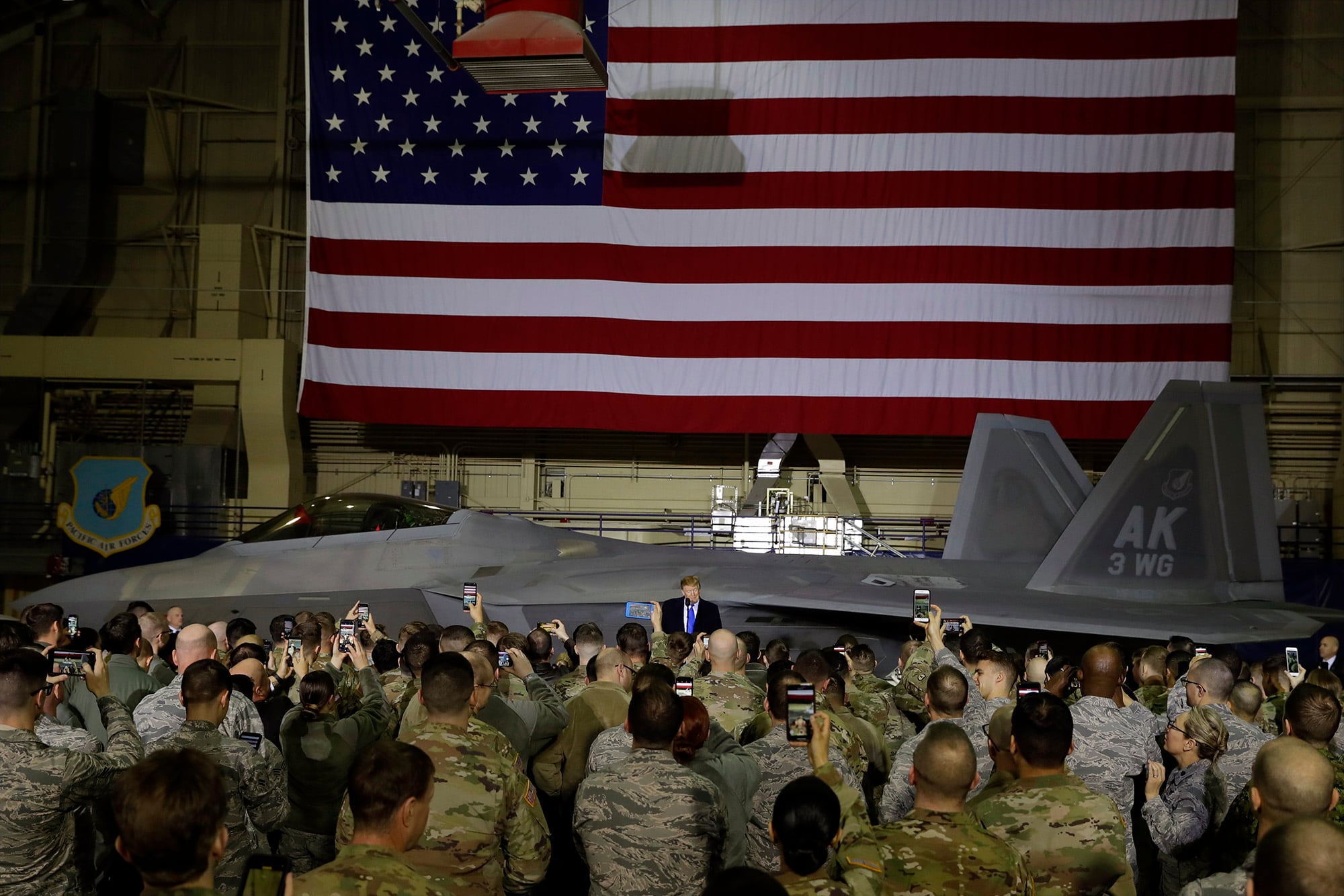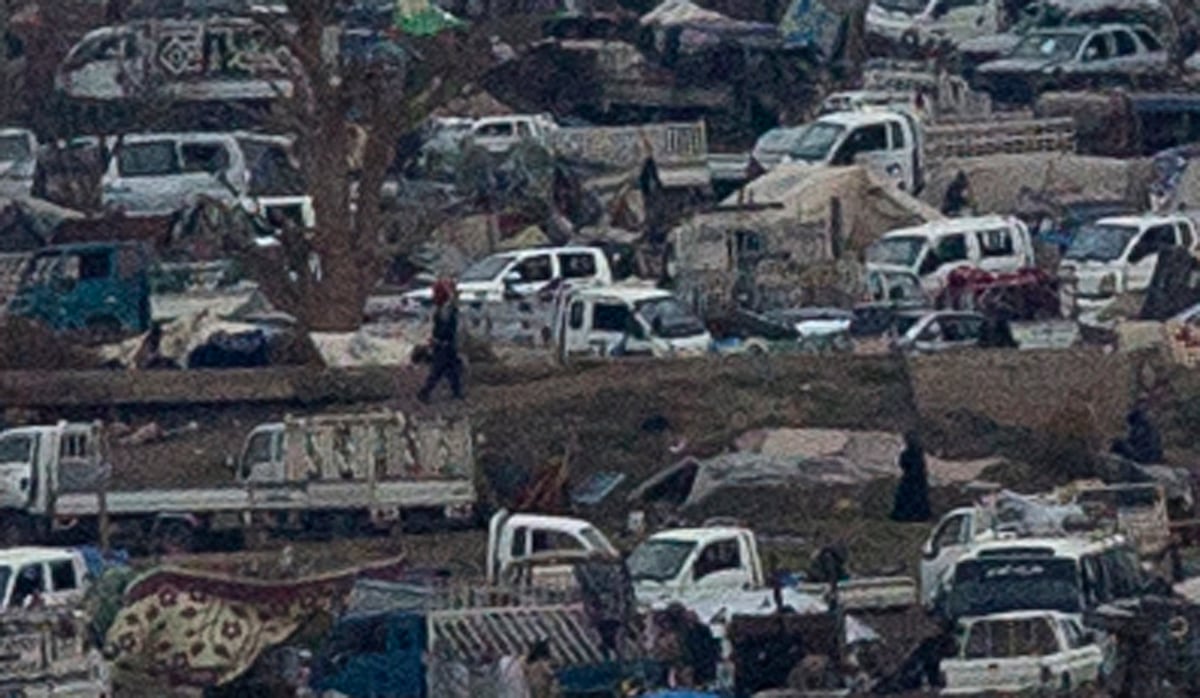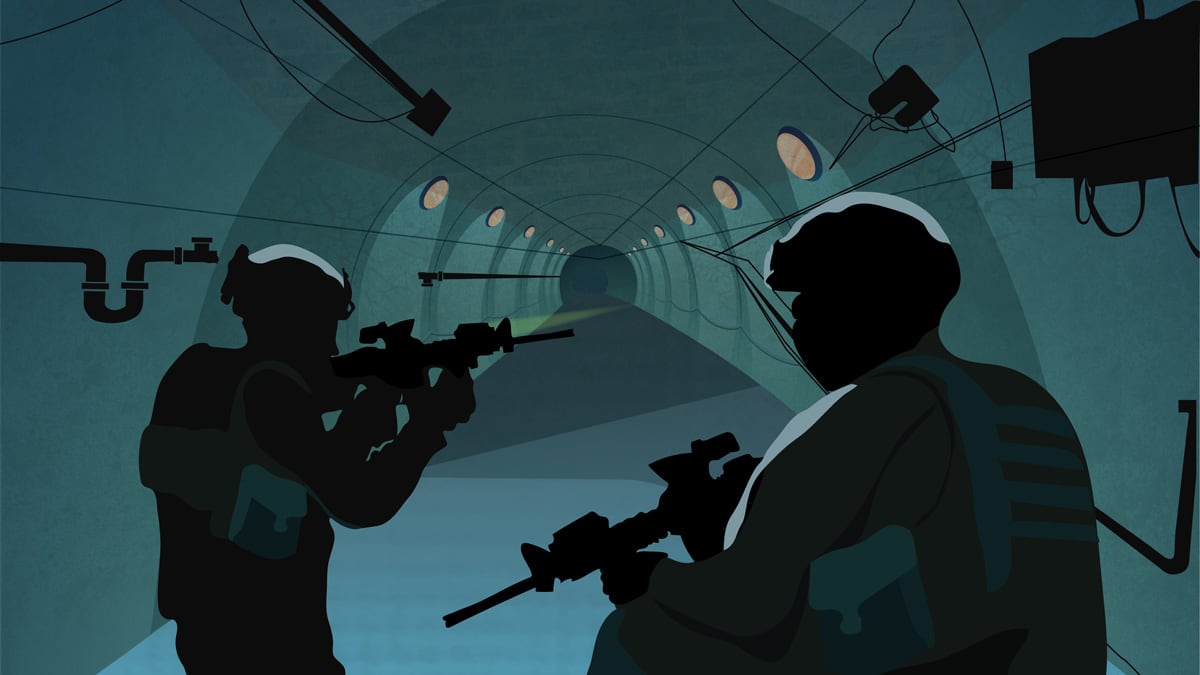BAGHOUZ, Syria — U.S.-backed forces fighting to recapture the last Islamic State group outpost in Syria admitted on Sunday they were facing “difficulties” defeating the extremists, saying they were being slowed by mines, tunnels and concerns over harming women and children among the militants.
The battle to capture the extremist group’s last patch of territory in eastern Syria — a collection of tents covering foxholes and underground tunnels in the village of Baghouz — has dragged on for weeks amid an unexpected exodus of civilians from the area.
The sheer number of people who have emerged from Baghouz, nearly 30,000 since early January according to Kurdish officials, has taken the Kurdish-led Syrian Democratic Forces by surprise. Most have been women and children whose existence in a labyrinth of underground caves and tunnels was unknown to the fighters.
RELATED

In the last two weeks, many fighters appeared to be among those evacuating. But an unknown number of militants and civilians remain inside, refusing to surrender.
"We are facing several difficulties regarding the operations," SDF commander Kino Gabriel told reporters outside Baghouz on Sunday.
He cited the large number of mines and explosive devices planted by ISIS and the existence of tunnels and hideouts beneath the ground that are being used by the militants to attack SDF forces or defend themselves.
The camp is all that remains of a self-declared Islamic "caliphate" that once sprawled across large parts of Syria and neighboring Iraq. But a declaration of victory and the group's territorial defeat has been delayed as the military campaign sputtered on in fits and starts.
A final push by Kurdish-led Syrian Democratic Forces started on Jan. 9 but has been paused on several occasions, mainly to allow for civilians to evacuate and fighters to surrender.
RELATED

Underscoring the struggles faced by the SDF as they try to flush the out extremists, three ISIS fighters emerged from Baghouz on Friday acting as though they wanted to surrender only to blew themselves up, killing six people.
The campaign has also been hindered by bad weather. Intermittent storms have at times turned the battlefield to mud and ISIS militants have mounted counteroffensives on windy days, burning tires and oil to try to force the SDF back with smoke.

On Sunday, dozens of men and women were seen walking around the besieged IS encampment in Baghouz, as SDF fighters watched from a hilltop close by.
The camp, looking much like a junkyard, was littered with damaged vans and pickup trucks parked between tents where people appeared to be moving about.
On the hilltop lookout north of Baghouz, an SDF sentry, lying flat on his stomach with his rocket launcher trained on the camp, cautioned an approaching comrade not to get too close. “There are snipers,” he said of the ISIS camp.
Gabriel said the camp was approximately 0.25 square kilometers in size — much the same area it was five weeks ago, when the SDF said it was finally going to conclude the battle.
RELATED

In the middle of the camp stands a pair of two-story compounds, showing little sign of damage. Several houses that appeared habitable can be seen as well.
With operations now stretching into the spring, Gabriel faced pointed questions from the press over whether ISIS would be able to resupply itself with water and goods, despite the siege.
He said he was not aware of any smuggling tunnels still in operation, and that ISIS was cut off from the outside world.
"I don’t think we will be seeing more ISIS terrorists appearing in this pocket, he said.
A commander participating in operations on the western side of the enclave said he did not believe ISIS was fleeing to the other side of the Euphrates River either, where Syrian government forces and their allies are holding positions.
Gabriel said 29,600 people have left Baghouz since Jan. 9, among them 5,000 fighters — far greater than the SDF had initially estimated remained inside.
He said the SDF no longer estimates how many people remained in Baghouz but added that recent evacuees told the fighting forces that another 5,000 were still inside.
The force and the Kurdish-led authorities that administer northeast Syria have banned in recent days journalists from interviewing evacuees from Baghouz.
The evacuees are now living in detention-like camps in the self-administered region that international humanitarian organizations say are vastly overcrowded and underserved. They say disease is rampant in the camps and medical care is desperately needed.
“The Daesh terrorists are starting to feel hunger and thirst and we are seeing this in the people who are coming out of the camp,” said Gabriel, using the Arabic acronym for ISIS.
